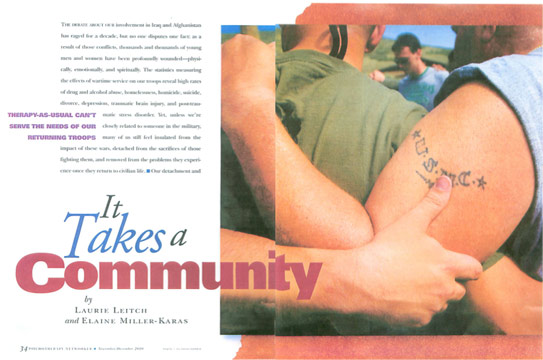 Threshold GlobalWorks (TGW) has been developing programs for inmates and corrections officers (COs); programs that help increase the capacity to self-regulate, decrease reactivity, and increase positive and resilient behavior. I have just returned from work in a maximum security prison in California where we worked for two days with a group of inmates using the Peace Builder Model, which combines Council Process (this was lead by Jared Seide, Director, Center for Council in CA) and Social Resilience Model skills and neuroeducation (my part). This blog entry will focus on work with inmates. There’s a lot to say about work with corrections officers as well…for another time.
Threshold GlobalWorks (TGW) has been developing programs for inmates and corrections officers (COs); programs that help increase the capacity to self-regulate, decrease reactivity, and increase positive and resilient behavior. I have just returned from work in a maximum security prison in California where we worked for two days with a group of inmates using the Peace Builder Model, which combines Council Process (this was lead by Jared Seide, Director, Center for Council in CA) and Social Resilience Model skills and neuroeducation (my part). This blog entry will focus on work with inmates. There’s a lot to say about work with corrections officers as well…for another time.
When I first began working in prisons (in Rwanda and Kenya in 2008-2009) I’m embarrassed to say that I was startled by what heart warming work it was. I was initially wary…believing I should be on guard about being manipulated. I hadn’t expected to feel such sincere and positive connections to individuals who had committed terrible crimes. And, many had a history of violence inside prison as well.
Sitting with the inmates, I heard about their efforts to move beyond their crimes and become contributing citizens. I learned a bit about the challenging, usually traumatic childhoods and/or events that had shaped their paths into criminal activity and the kinds of things that happened in prison that set them off. I realized how complex the path to antisocial behavior can be and how tempting it is to think in simplistic polarities…I’m good, you’re bad…rather than more nuanced ways of understanding how people end up in prison…over and over, in many cases.
The neuroscience lens that TGW brings to this work is not very well known in the world of corrections even though it has a great deal to offer in terms of how to design prison processes that could reduce violence and recidivism, how to increase the resilience of both inmates and corrections officers to promote principled behavior and wellness, and how to support positive reentry experiences following prison. Our Social Resilience Model skills provide an important resource to individuals who often lash out instead of thinking through a set of options. The skills also build greater stability and self-awareness.
We offer neuroeducation as a way to motivate people to practice the skills as well as to help them understand key ways that all humans are “wired” to respond to threat and fear. At the prison last week, the men we worked with were genuinely excited to learn about neuroplasticity. I know, that sounds geeky, but it’s true. Giving ordinary people information, especially information that is mostly held by “elites” such as academics, clinicians, physicians, and scientists, gives a sense of dignity and respect. And, the notion that they have the power to change their brains….based on what they pay attention to….is a radical and empowering idea to them. Our SRM skills help people learn how to direct attention in ways that bring balance to the nervous system and, with practice, “wire-in” greater hardiness. This hardiness makes it possible to respond to the unexpected rather than reacting in ways that get you in trouble.
The men also were interested to learn about the impact of early events on brain development, memory, attention, concentration, health, etc. This kind of information can help depathologize reactivity (this does NOT mean you don’t take responsibility for what you do out of reactivity) as a way the nervous system is wired to respond to threat and fear. I told them about the Adverse Childhood Events (ACE) Study done by Kaiser Permanente. In the study more than 7,000 individuals were studied for how many ACEs they had during childhood…events such as violence and sexual abuse in the home, imprisonment of a family member, substance abuse, etc. In the Kaiser study anyone with 4 or more ACEs was found later in life to experience far more negative health consequences, including an earlier death (I didn’t share that part of the study). Without asking these men to tell me the specific events they had experienced when I read the Kaiser study list I did ask how many had experienced 2, 3, 4, 5 or more events. I said, “2” and every hand went up…”3”, all hands went up, “4”, the same…all hands went up….every man in the group had experienced 5 or more.
This certainly speaks to the need for supportive services for “at risk” children and their families that draw upon neuroscience research in their design to help reduce negative events and build strong and healthy attachments to positive figures. We know from this research, for example, that every one of us needs to feel validated and safe in the world. It is imperative for pro-social behavior. Our community-based agencies have an essential role to play in designing programs that increase the capacity for these positive behaviors.
Gang membership is a major characteristic of the men in our group. Their tattoos and scars tell a story of membership. Think about what draws young people into gangs: status, reliable rules and ways of behaving (negative though they may be), a sense of belonging as a valued member, and, especially, high risk activities that feed the adolescent’s drive for intensity. Lawrence Steinberg’s new book: The Age of Opportunity: Lessons from the New Science of Adolescence describes how puberty changes the brain’s chemistry as sex hormones come flooding in…with their powerful effect on dopamine (the pleasure chemical) circuitry in the brain. He tells us that adolecents have a heightened sensitivity for reward (which they often get through adrenalin-seeking behaviors and use of substances) and a reduced sensitivity to loss…or consequences.
Steinberg’s work shows us that we must find creative ways to shape positive behaviors through reward rather than punishment. I think this is the same in prisons, which are set up as punishment for crime. But, once inside, if we want to reduce violence among inmates and between COs and inmates we need to pay more attention to rewards for both groups. There is a worry that if prison isn’t a negative experience inmates will not have “paid for their crimes.” However, being deprived of freedom, of family, of work and so often of dignity is a huge punishment in and of itself. We are only increasing the problem when our prisons allow harsh and demeaning practices which put both inmates and COs at risk. And, it is important to note that many individuals are incarcerated because our system of law and order often unfairly targets men of color both in arrests and length of sentences.
I am optimistic that bringing a neuroscience lens to the arena of corrections, while certainly not a panacea, can make an exciting contribution to policies and programs in prisons. It also works preventively by shaping how we work with “at risk” youth and their families, how we develop community-based programs that meet the needs that all of us hunger to have met, and that enhance positive behaviors. This lens is needed from the very top of the policy arena (politicians and other policy-making officials) to those whose potential is being wasted by programs that primarily rob them of dignity and the opportunity to do better.

